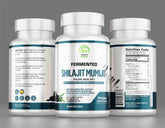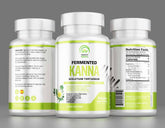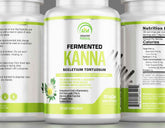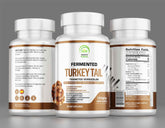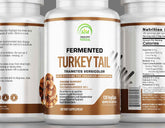Sources of EPA and DHA
Top Natural Sources of EPA and DHA for Optimal Health
Omega-3 fatty acids are essential nutrients that play a critical role in maintaining overall health. Among the various types of omega-3s, eicosapentaenoic acid (EPA) and docosahexaenoic acid (DHA) are particularly important. These long-chain omega-3 fatty acids are primarily found in marine sources and have numerous health benefits. Given the challenges of obtaining sufficient EPA and DHA from diet alone, many people turn to dietary supplements to meet their needs. This blog explores the diverse sources of EPA and DHA in dietary supplements, detailing their origins, production methods, and the pros and cons of each type.
Marine Sources of EPA and DHA
Fish Oil
1. What is Fish Oil?
Fish oil is one of the most popular and widely available sources of EPA and DHA. It is derived from the tissues of oily fish such as salmon, mackerel, sardines, and anchovies. Fish oil supplements are available in various forms, including capsules, soft gels, and liquid oils.
2. Production Process
The production of fish oil involves several steps:
- Harvesting: Fish are caught and transported to processing facilities.
- Rendering: Fish tissues are cooked to separate the oil from the solid components.
- Centrifugation: The oil is extracted and purified using centrifugation to remove impurities and contaminants.
- Refining: The oil undergoes further refining to remove any remaining toxins, such as heavy metals and polychlorinated biphenyls (PCBs).
- Concentration: Some fish oils are concentrated to increase the levels of EPA and DHA.
3. Pros and Cons of Fish Oil
Pros:
- High levels of EPA and DHA
- Widely available and relatively affordable
- Extensive research supporting health benefits
Cons:
- Risk of contamination with heavy metals and toxins
- Fishy aftertaste and potential for "fish burps"
- Not suitable for vegetarians or vegans
Cod Liver Oil
1. What is Cod Liver Oil?
Cod liver oil is derived specifically from the liver of codfish. It is a rich source of both EPA and DHA, as well as vitamins A and D.
2. Production Process
The production process for cod liver oil is similar to that of fish oil but involves additional steps to extract the oil from the liver:
- Harvesting: Codfish are caught, and their livers are removed.
- Rendering: The livers are cooked to separate the oil.
- Purification: The oil is purified to remove impurities and ensure safety.
- Fortification: Some cod liver oils are fortified with additional vitamins.
3. Pros and Cons of Cod Liver Oil
Pros:
- High levels of EPA, DHA, and vitamins A and D
- Traditional remedy with a long history of use
- Supports overall health beyond omega-3s
Cons:
- Strong taste and odor
- Risk of vitamin A toxicity if consumed in excess
- Potential contamination with pollutants
Krill Oil
1. What is Krill Oil?
Krill oil is extracted from Antarctic krill, small shrimp-like crustaceans. It is a relatively new source of omega-3s and contains EPA and DHA bound to phospholipids, which may enhance absorption.
2. Production Process
The production of krill oil involves the following steps:
- Harvesting: Krill are sustainably harvested from the Antarctic Ocean.
- Extraction: The oil is extracted using a cold-press method to preserve its nutritional value.
- Purification: The oil undergoes purification to remove contaminants.
3. Pros and Cons of Krill Oil
Pros:
- High bioavailability due to phospholipid content
- Contains astaxanthin, a powerful antioxidant
- Less risk of fishy aftertaste
Cons:
- More expensive than fish oil
- Lower EPA and DHA content compared to fish oil
- Not suitable for people with shellfish allergies
Algal Oil
1. What is Algal Oil?
Algal oil is derived from marine algae and is a plant-based source of EPA and DHA. It is particularly popular among vegetarians and vegans.
2. Production Process
The production of algal oil involves:
- Cultivation: Specific strains of algae are cultivated in controlled environments.
- Harvesting: The algae are harvested and dried.
- Extraction: Oil is extracted using methods such as cold-pressing or solvent extraction.
- Refining: The oil is refined to remove impurities and enhance purity.
3. Pros and Cons of Algal Oil
Pros:
- Suitable for vegetarians and vegans
- Sustainable and environmentally friendly
- Free from marine contaminants
Cons:
- Higher cost compared to fish oil
- Lower overall EPA and DHA content in some products
- Limited availability
Terrestrial Sources of EPA and DHA
While marine sources are the primary sources of EPA and DHA, some terrestrial sources also provide these essential fatty acids, albeit in smaller amounts or through indirect conversion processes.
Fortified Foods
1. What are Fortified Foods?
Fortified foods are those that have had nutrients added to them that were not originally present. Some foods are fortified with EPA and DHA to help consumers meet their omega-3 needs.
2. Examples of Fortified Foods
- Dairy Products: Milk, yogurt, and cheese can be fortified with EPA and DHA.
- Eggs: Some eggs are enriched with omega-3s by feeding hens a diet high in flaxseed, algae, or fish oil.
- Bread and Cereals: Certain bread and cereal products are fortified with omega-3s.
3. Pros and Cons of Fortified Foods
Pros:
- Convenient way to increase omega-3 intake
- Easily incorporated into daily diet
- Available in various forms
Cons:
- Often contain lower amounts of EPA and DHA compared to supplements
- Can be more expensive than non-fortified versions
- May not provide sufficient omega-3s for individuals with high needs
Functional Foods
1. What are Functional Foods?
Functional foods are foods that provide health benefits beyond basic nutrition. Some functional foods are specifically designed to deliver EPA and DHA.
2. Examples of Functional Foods
- Omega-3-Enriched Margarine: Spreadable margarine fortified with EPA and DHA.
- Omega-3-Rich Snacks: Snack bars, nuts, and seeds fortified with omega-3s.
- Omega-3-Infused Beverages: Juices and smoothies enriched with EPA and DHA.
3. Pros and Cons of Functional Foods
Pros:
- Convenient and tasty way to consume omega-3s
- Often combined with other health-promoting ingredients
- Available in various forms
Cons:
- May contain added sugars or unhealthy fats
- Typically provide lower amounts of EPA and DHA compared to direct supplements
- Can be more expensive than non-functional counterparts
Innovative and Emerging Sources of EPA and DHA
As the demand for omega-3 supplements continues to grow, researchers and manufacturers are exploring innovative and emerging sources of EPA and DHA to provide more options for consumers.
Genetically Modified Plants
1. What are Genetically Modified Plants?
Genetically modified (GM) plants are those that have been altered using genetic engineering techniques to produce specific traits, such as increased nutrient content. Some GM plants are being developed to produce EPA and DHA.
2. Examples of GM Plants for Omega-3 Production
- Camelina Sativa: A plant that has been genetically modified to produce EPA and DHA in its seeds.
- Soybeans: Research is ongoing to develop soybeans that can produce significant amounts of EPA and DHA.
3. Pros and Cons of GM Plants
Pros:
- Sustainable and scalable source of omega-3s
- Potential to reduce reliance on marine sources
- Can be integrated into existing agricultural systems
Cons:
- Public skepticism and regulatory hurdles regarding GM foods
- Potential environmental impact of GM crop cultivation
- Uncertain long-term health effects
Fermentation-Based Sources
1. What are Fermentation-Based Sources?
Fermentation-based sources involve using microorganisms such as yeast and bacteria to produce EPA and DHA through fermentation processes.
2. Production Process
The production process typically involves:
- Selection of Microorganisms: Specific strains of yeast or bacteria are chosen for their ability to produce EPA and DHA.
- Fermentation: The microorganisms are cultured in controlled environments where they convert substrates into omega-3 fatty acids.
- Extraction and Purification: The omega-3 fatty acids are extracted and purified from the microbial biomass.
3. Pros and Cons of Fermentation-Based Sources
Pros:
- Sustainable and environmentally friendly production
- Consistent and controlled quality
- Suitable for vegetarians and vegans
Cons:
- High production costs
- Limited availability compared to traditional sources
- Potential taste and texture issues in end products
Considerations When Choosing Omega-3 Supplements
Purity and Contaminants
When selecting omega-3 supplements, it is crucial to consider the purity of the product and the potential presence of contaminants such as heavy metals, PCBs, and dioxins. High-quality supplements undergo rigorous purification processes to ensure safety and efficacy.
1. Purity Testing
Reputable manufacturers test their products for purity and contaminants, providing certificates of analysis (COAs) to verify the results. Look for supplements that have been third-party tested to ensure they meet strict quality standards.
2. Potential Contaminants
Marine-based omega-3 supplements are particularly susceptible to contamination due to pollutants in the oceans. Purification methods such as molecular distillation and supercritical CO2 extraction can help remove these contaminants, but it is essential to choose products from brands that prioritize safety and transparency.
Bioavailability
Bioavailability refers to the extent and rate at which the active ingredients (EPA and DHA) are absorbed and utilized by the body. Different forms of omega-3 supplements have varying bioavailability, which can influence their effectiveness.
1. Triglyceride vs. Ethyl Ester Forms
- Triglyceride Form: Omega-3s in the triglyceride form are similar to the natural form found in fish and are generally more bioavailable.
- Ethyl Ester Form: Some supplements contain omega-3s in the ethyl ester form, which may be less bioavailable but can be more concentrated.
2. Phospholipid Form
Krill oil contains omega-3s in the phospholipid form, which may offer enhanced bioavailability compared to triglyceride and ethyl ester forms.
3. Liposomal and Emulsified Forms
Emerging technologies such as liposomal and emulsified omega-3 supplements are designed to improve bioavailability by enhancing the stability and absorption of EPA and DHA.
Sustainability
Sustainability is an important consideration when choosing omega-3 supplements. Overfishing and environmental concerns have raised awareness about the need for sustainable sources of EPA and DHA.
1. Sustainable Fishing Practices
Look for supplements sourced from fisheries that follow sustainable practices and are certified by organizations such as the Marine Stewardship Council (MSC) or Friends of the Sea (FOS).
2. Alternative Sources
Consider supplements derived from sustainable sources such as algal oil, krill oil, and fermentation-based omega-3s, which have a lower environmental impact compared to traditional fish oil.
Dosage and Concentration
The dosage and concentration of EPA and DHA in omega-3 supplements can vary widely. It is essential to choose a product that provides an adequate amount of these fatty acids to meet your individual health needs.
1. Recommended Dosage
The recommended dosage of EPA and DHA can vary depending on factors such as age, health status, and specific health goals. It is important to consult with a healthcare professional to determine the appropriate dosage for your needs.
2. Concentration
High-concentration omega-3 supplements provide more EPA and DHA per serving, which can be beneficial for individuals with higher needs or those looking for more convenient dosing options.
Additional Ingredients
Some omega-3 supplements contain additional ingredients that can enhance their health benefits or improve their stability and taste.
1. Antioxidants
Antioxidants such as vitamin E, astaxanthin, and rosemary extract are often added to omega-3 supplements to prevent oxidation and extend shelf life.
2. Flavorings and Additives
Flavorings and other additives can improve the taste and palatability of omega-3 supplements, particularly for liquid oils. However, it is important to choose products with natural and minimal additives to avoid unnecessary ingredients.
Choosing the Right Omega-3 Supplement for Your Needs
With so many options available, choosing the right omega-3 supplement can be overwhelming. Here are some tips to help you make an informed decision:
Identify Your Needs
Consider your specific health goals and needs when selecting an omega-3 supplement. Whether you are looking to support general wellness, manage a specific health condition, or enhance athletic performance, identifying your goals can help you choose the most appropriate product.
Research Brands and Products
Take the time to research different brands and products to ensure you are choosing a high-quality supplement. Look for brands with a good reputation, transparent labeling, and third-party testing to verify purity and potency.
Consult a Healthcare Professional
Consult with a healthcare professional to determine the appropriate dosage and type of omega-3 supplement for your individual needs. They can provide personalized recommendations based on your health status and goals.
Read Labels and Reviews
Carefully read product labels to understand the source, concentration, and additional ingredients in the supplement. Reading customer reviews can also provide insights into the effectiveness and quality of the product.
Start with a Trial
If you are unsure which supplement to choose, consider starting with a smaller trial size or sample pack to see how your body responds before committing to a larger purchase.
Conclusion
EPA and DHA are essential omega-3 fatty acids that offer numerous health benefits. Obtaining sufficient amounts of these nutrients through diet alone can be challenging, making dietary supplements a valuable option. From traditional sources like fish oil and cod liver oil to innovative options like algal oil and fermentation-based omega-3s, there are various sources to meet different needs and preferences. By considering factors such as purity, bioavailability, sustainability, and dosage, you can choose the right omega-3 supplement to support your health and well-being.
Omega-3s for Brain Health: Unlocking Cognitive Potential
This comprehensive blog explores the role of omega-3 supplements in supporting brain function, backed by scientific evidence, mechanisms of action, recommended dosages, potential side effects, and practical tips for incorporating these supplements into your routine..
- Choosing a selection results in a full page refresh.



